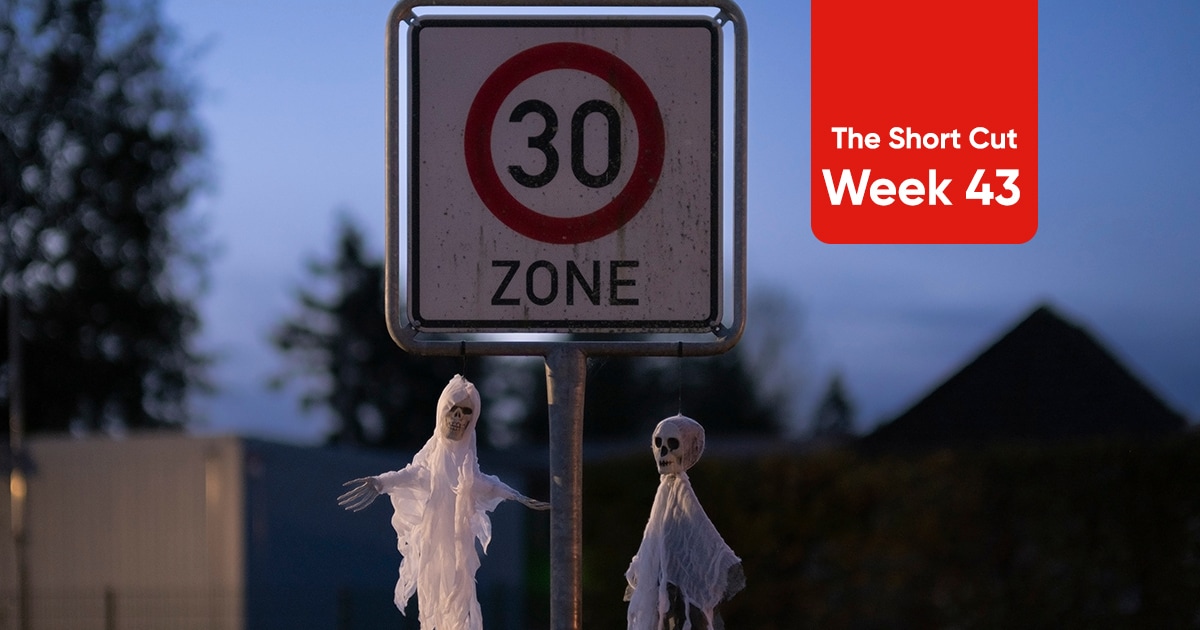
Well, it's that time of the year again, Halloween is just around the corner. With that in mind, in this edition, we'll take a look at digital maps that make the Halloween candy hunt easier, Japan's shortage of taxi drivers, an electric jet breaking into the U.S. market, robot dogs mapping radiation and more.
The Halloween candy hunt goes digital
Nextdoor, a social app that connects neighbors, has developed a treat map feature that allows users to find houses that are giving out candy for Halloween, MiamiHerald reports.
The feature – first launched in 2020 – will be available throughout the month of October. The goal is to help trick-or-treaters in America find houses that are happy to entertain their seasonal Halloween celebrations. It allows neighbors to know who is giving out candy, what houses have spooky decorations and even who is offering treats for pets too.
Driver shortage may force Japan to lift restrictions on ride-hailing
The Japanese government is considering lifting current strict restrictions on ride-hailing as the lack of transportation options and driver shortage is becoming a social issue.Strict restrictions have caused a 20% decline of drivers in the taxi industry since 2019, says the Japan Federation of Hire-Taxi Association, as reported by Bloomberg. Rules cover how to set fares, where to place signage or even force drivers to pass a second test to obtain a taxi license.
While the Federation criticized ride-hailing arguing that it “positions drivers as independent sole proprietors and evades labor regulations”, looser regulations could not only open the door for ride-sharing companies but also to connect rural areas that lack public transportation.London ULEZ expansion pushes diesel drivers to the North
Stricter emissions regulations and the expansion of London's Ultra-Low Emission Zone (ULEZ) are pushing UK car dealers to reallocate diesel cars from London to the north of England and Scotland, Bloomberg reports.
The ULEZ charges have primarily affected older diesel cars that don't meet emission standards. As a result, some models have lost up to 14.1% of their value in the past year. However, they remain popular elsewhere in the UK because of their cost-effectiveness on long drives.Critics of the ULEZ expansion argue that it affects suburban residents who need to rely on cars as the public transportation infrastructure is limited. However, the mayor of London, Sadiq Khan, continues to defend the expansion as a way to combat air pollution and climate change.The world of electric is ready to fly
German aviation company Lilium is partnering with an American aviation dealer to sell its new electric jet in the United States, TheVerge reports.
The aircraft sometimes mislabeled as a “flying car”, intends to break into the American market by offering an alternative to noisy and polluting private jets. It will be sold for $10 million, almost twice as much as an equivalent gas-powered four-passenger private jet.The company expects to receive the final design, safety, and production certifications from both the European and American aviation federations by 2025. Once obtained, they can start manufacturing the aircraft. One certain thing is: the world of electric keeps expanding.Scientists make radiation maps with robot dogs
Scientists from the Lawrence Berkeley National Laboratory in California have created a multi-sensor system for real-time 3D mapping of nuclear radiation and are teaching a robotic dog to locate radioactive material.The multi-sensor systems use a combination of technologies that not only detect radiation but also visually map it making it a valuable tool for assessing and responding to radiological threats.If you're looking for a long read for the weekend, the Berkeley Laboratory has compiled all the key details and possible applications of its new tech.
And that wraps up this week's Short Cut! See you in a couple of weeks with more exciting stories in the world of tech, mobility and location data. Keep an eye out for updates!
People also read
)
Forget worrying about range, charging anxiety is now the prime concern for EV drivers
)
'Location-informed' could be the next frontier for generative AI
)
Do low emission zones work? TomTom Traffic Index has the answer
)
Q&A: How is TomTom helping fix the pains of the EV industry?
* Required field. By submitting your contact details to TomTom, you agree that we can contact you about marketing offers, newsletters, or to invite you to webinars and events. We could further personalize the content that you receive via cookies. You can unsubscribe at any time by the link included in our emails. Review our privacy policy. You can also browse our newsletter archive here.
)